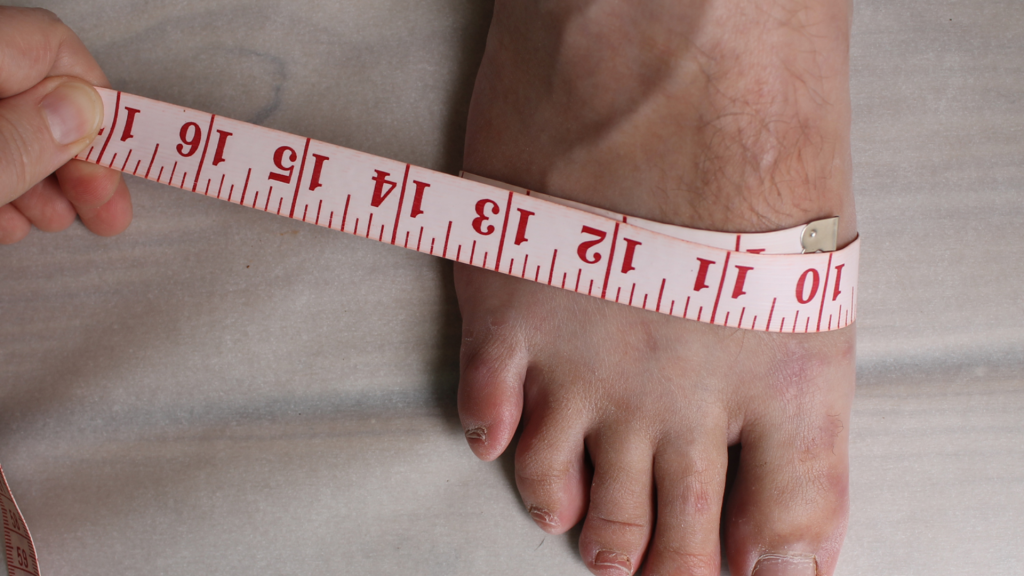Finding the right shoe size is important for comfort and support, and foot circumference plays a big role in getting that perfect fit. Foot circumference is the measurement around the widest part of your foot, and it helps determine the best shoe width.
While many people focus on foot length when choosing shoes, knowing your foot circumference can make a huge difference in finding shoes that fit well. In this blog, we’ll explain how to measure your foot circumference, how it affects your shoe size, and how to use foot circumference size charts to choose the right shoes.
Whether you’re buying shoes for kids or adults, understanding foot circumference will help you avoid the discomfort of shoes that are too tight or loose.
Why Foot Circumference is Important
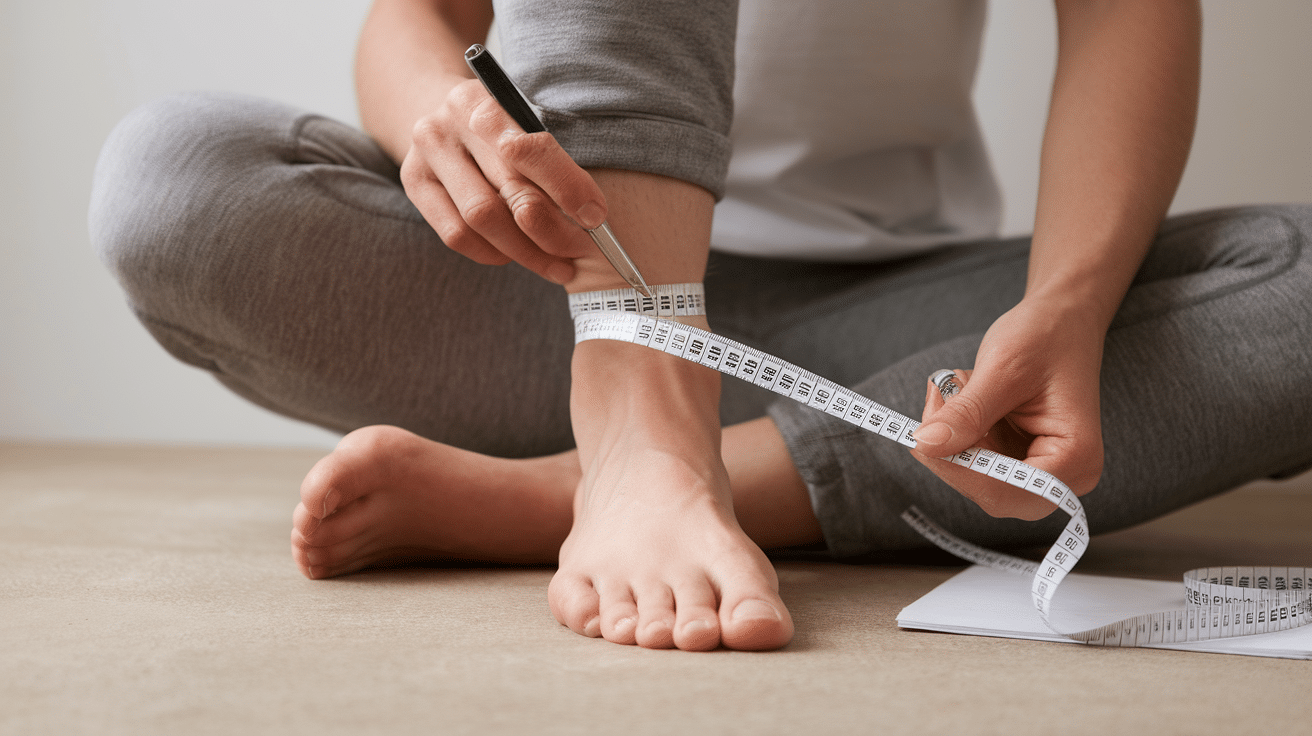
When it comes to finding the perfect pair of shoes, foot length isn’t the only thing you need to measure. Foot circumference is just as important.
Foot circumference is the measurement around the widest part of your foot, usually across the ball and around the arch. It tells you how much space your foot needs inside the shoe.
If your foot is wider, you’ll need shoes with more room to prevent discomfort. Shoes that are too tight around the circumference can cause blisters, pinching, or even long-term foot problems. On the other hand, shoes that are too loose can feel unstable and may cause discomfort and potential injuries.
In short, foot circumference helps ensure that your shoes fit properly, offering both comfort and support throughout the day. Knowing your foot circumference is key to avoiding uncomfortable shoes.
How to Measure Foot Circumference
Measuring your foot circumference is simple and only takes a few minutes. Here’s how you can do it:
1. Gather Your Tools: You’ll need a flexible measuring tape, a pen, and some paper to write down your measurements.
2. Sit Comfortably: Sit in a chair with your foot flat on the floor. Make sure your foot is relaxed and not stretched out.
3. Wrap the Tape Around Your Foot: Wrap the measuring tape around the widest part of your foot. This is usually across the ball of your foot and around the arch.
4. Check the Fit: Make sure the tape is snug but tight. You should be able to fit one finger between the tape and your foot to make sure it’s comfortable.
5. Record the Measurement: Once the tape is in place, write down the number where the tape meets. This is your foot circumference.
Remember, measuring both feet is a good idea since one might be slightly larger than the other.
Foot Circumference Size Charts
Foot circumference size charts are helpful tools that match your foot measurements to the correct shoe size and width. These charts show you the best shoe size based on measuring the widest part of your foot. Here’s what you need to know about these charts:
1. Infant and Toddler Sizes
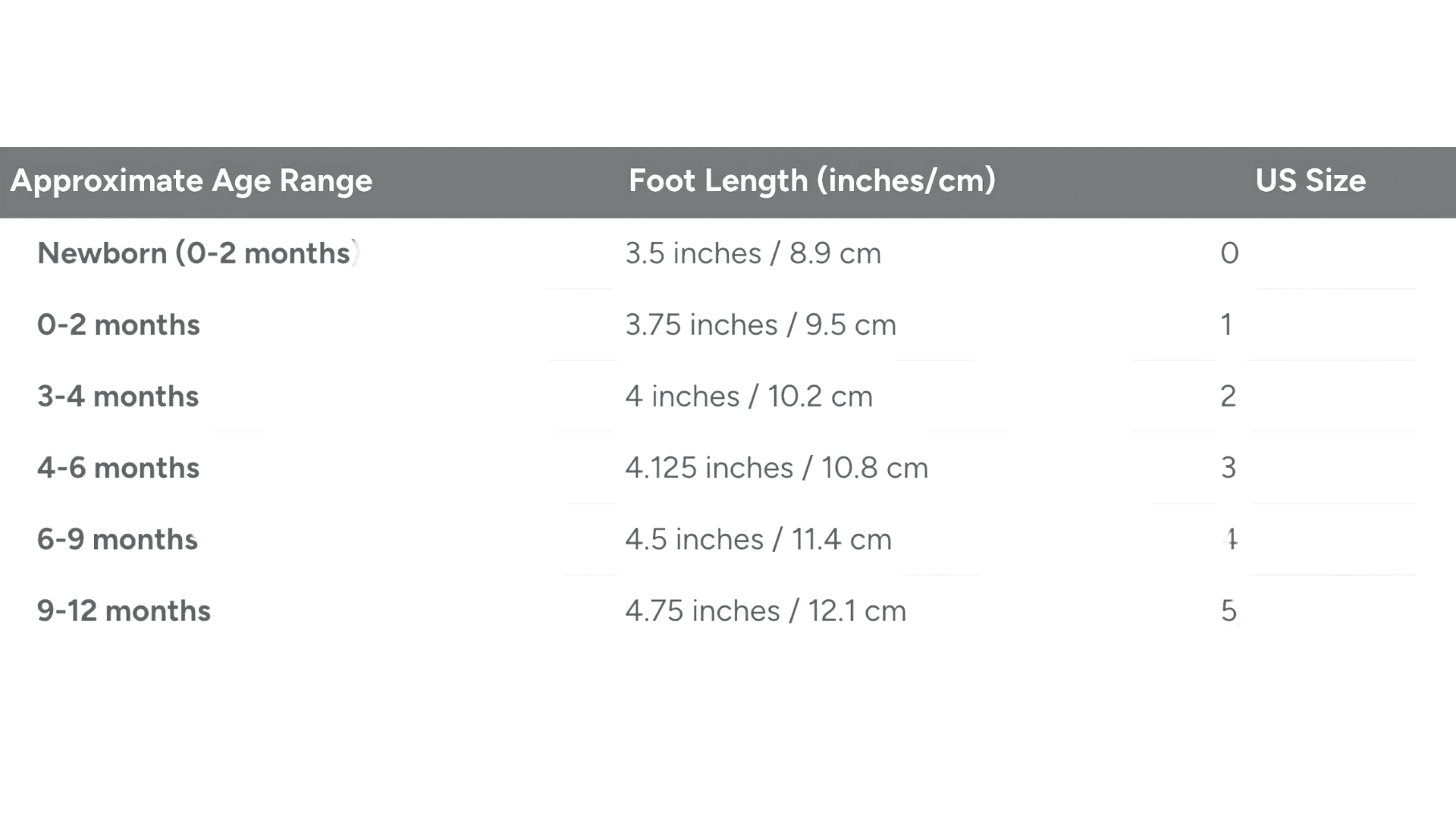
For young children, foot circumference is usually smaller. A typical size chart for infants or toddlers may show measurements in inches or centimeters that correspond to baby or toddler shoe sizes. These sizes help ensure that little feet have enough room to grow without cramping. For example:
- Size 0 (0-3 months): 3.5 inches (8.9 cm)
- Size 2 (6-12 months): 4.0 inches (10.2 cm)
2. Children’s and Youth Sizes
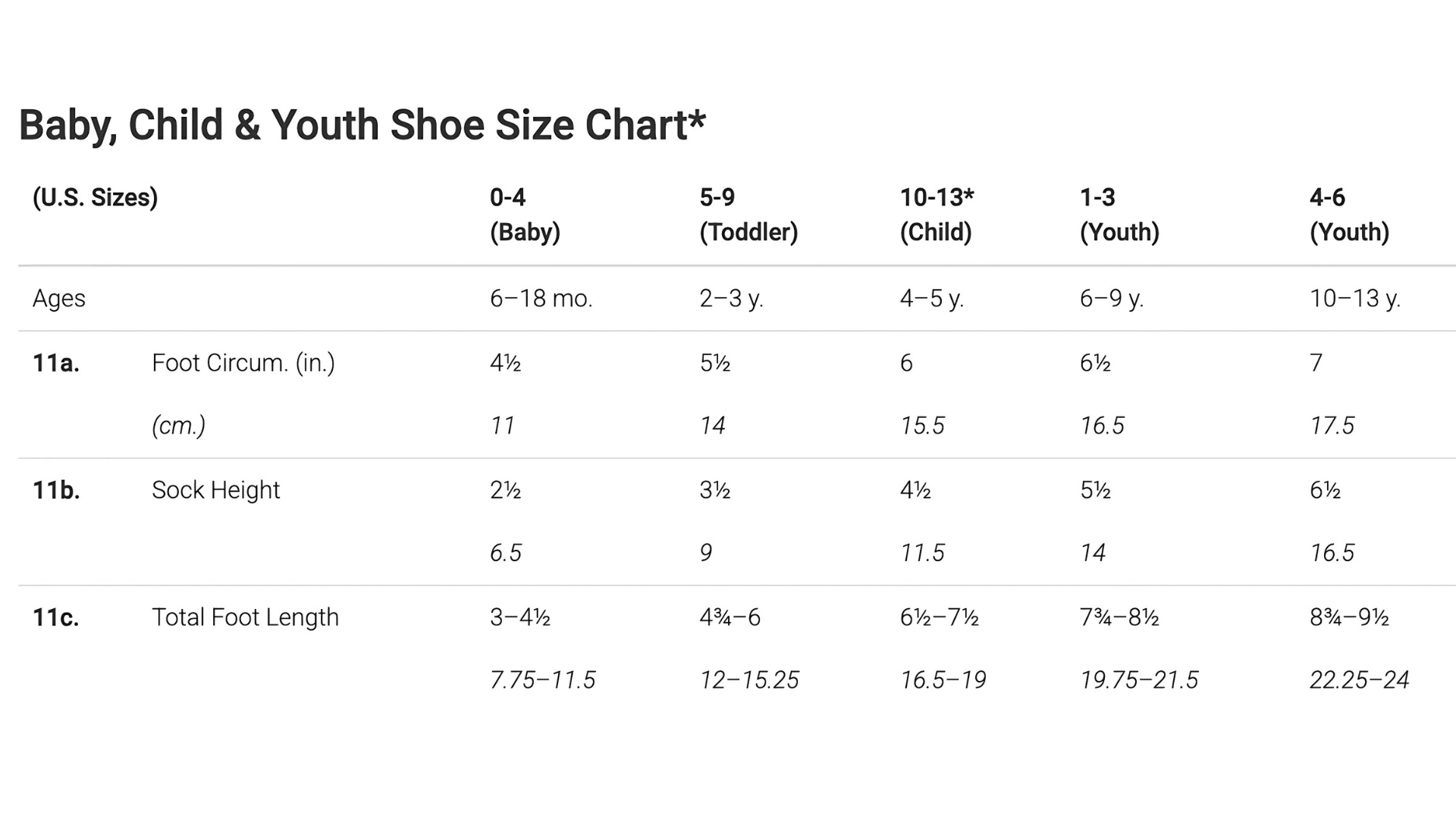
As kids grow, their foot circumference also increases. A children’s foot circumference size chart helps determine the best shoe size for kids, ensuring that their shoes are not too tight or too loose. Youth size charts may go up to adult sizes, typically between 9 to 13 years of age. For example:
- Size 10 (3-4 years): 5.5 inches (14 cm)
- Size 13 (8-9 years): 6.5 inches (16.5 cm)
3. Women’s Sizes
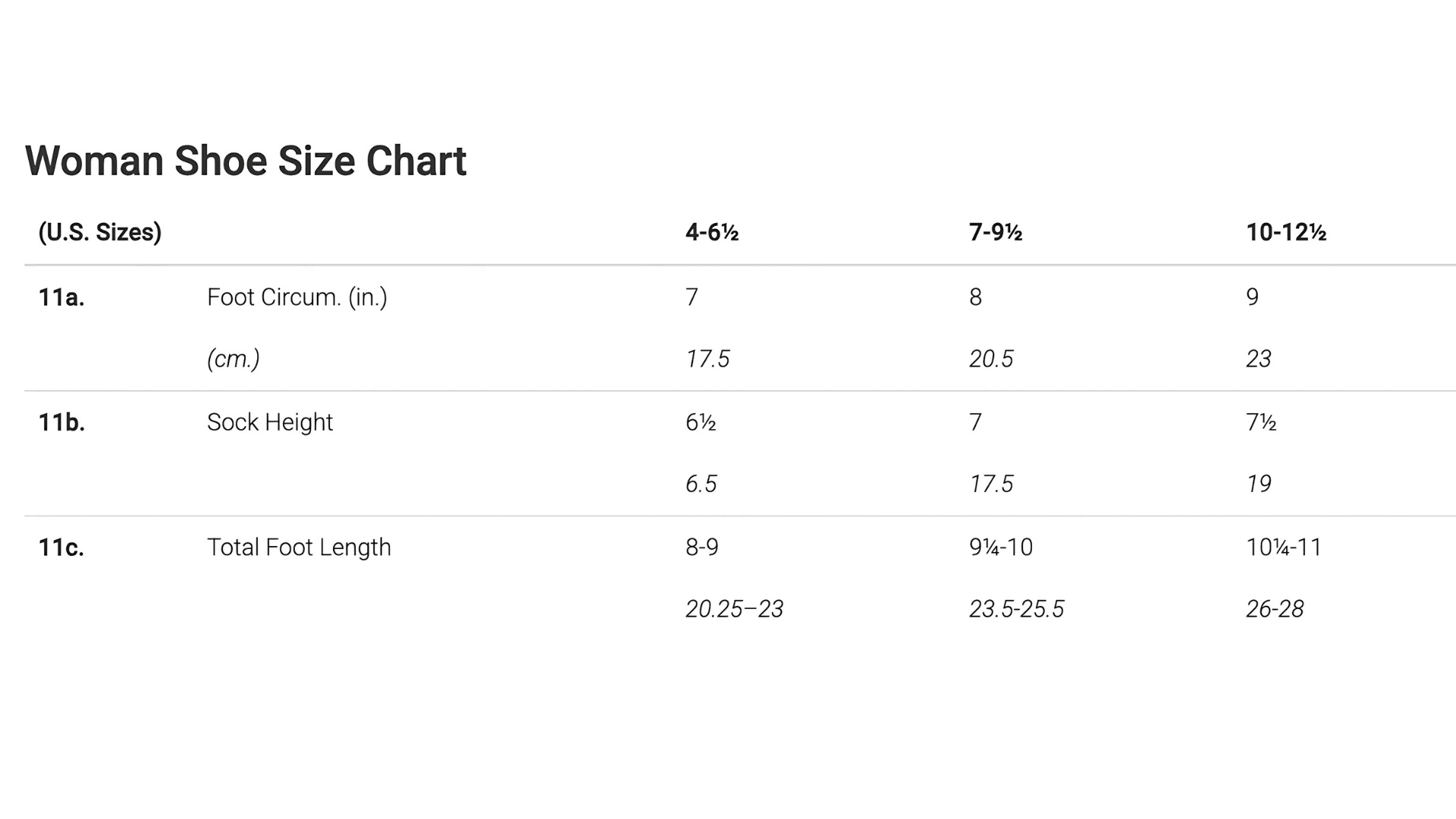
Foot circumference is especially important for women’s shoes, as they come in various widths. The width categories, such as narrow, medium, wide, and extra wide, help ensure the shoe fits comfortably across the ball and arch of the foot. For example:
- Size 6 (US Women’s): 8.5 inches (21.6 cm) – medium width
- Size 9 (US Women’s): 9.5 inches (24.1 cm) – wide width
4. Men’s Sizes
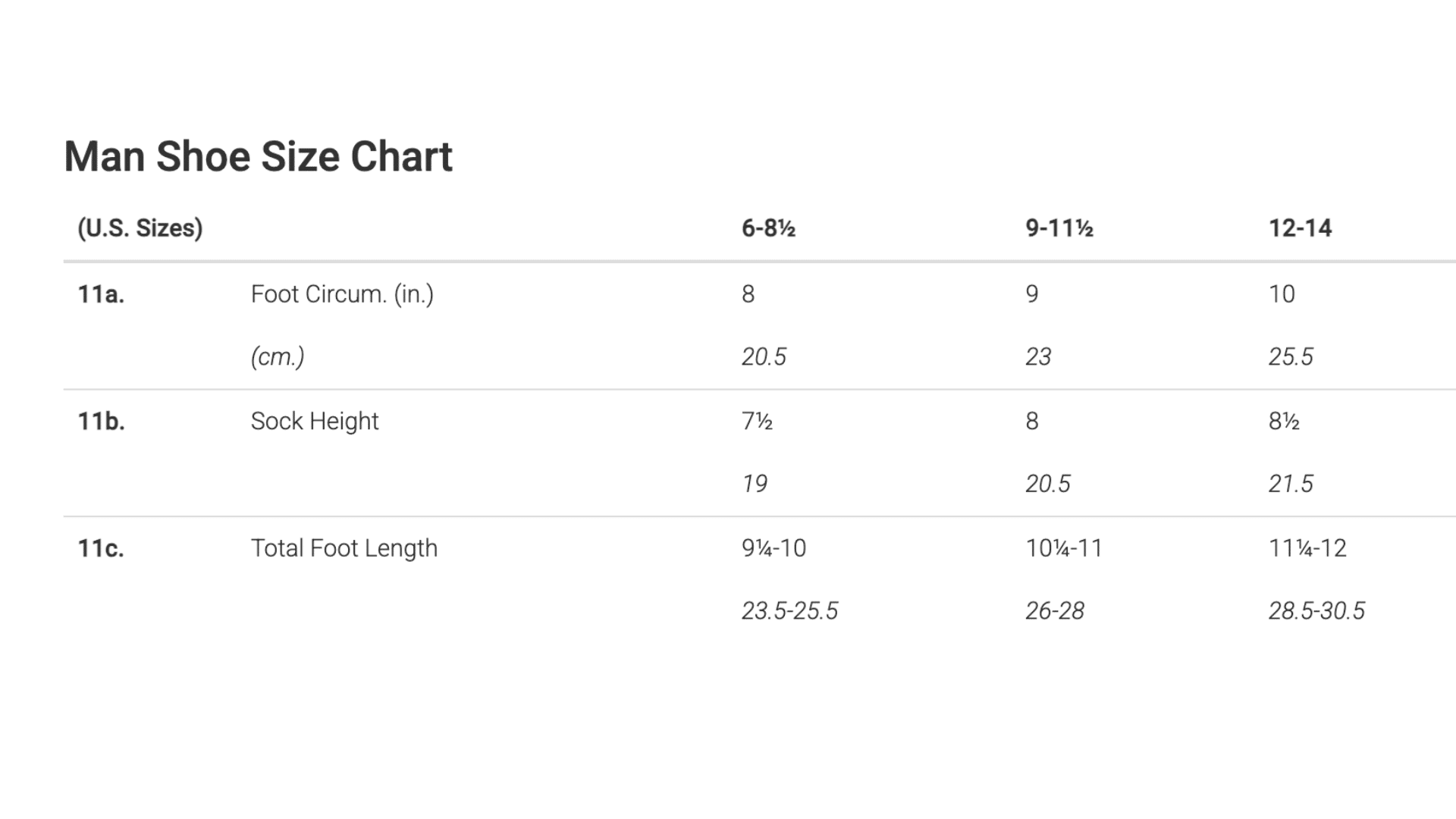
For men, foot circumference also plays a key role in selecting shoes, as men’s shoes often come in wider sizes. The width categories are typically narrow, medium, wide, and extra wide, similar to women’s shoes, but men’s shoes are usually larger. For example:
- Size 8 (US Men’s): 9.25 inches (23.5 cm) – medium width
- Size 11 (US Men’s): 10 inches (25.4 cm) – wide width
5. Width Categories
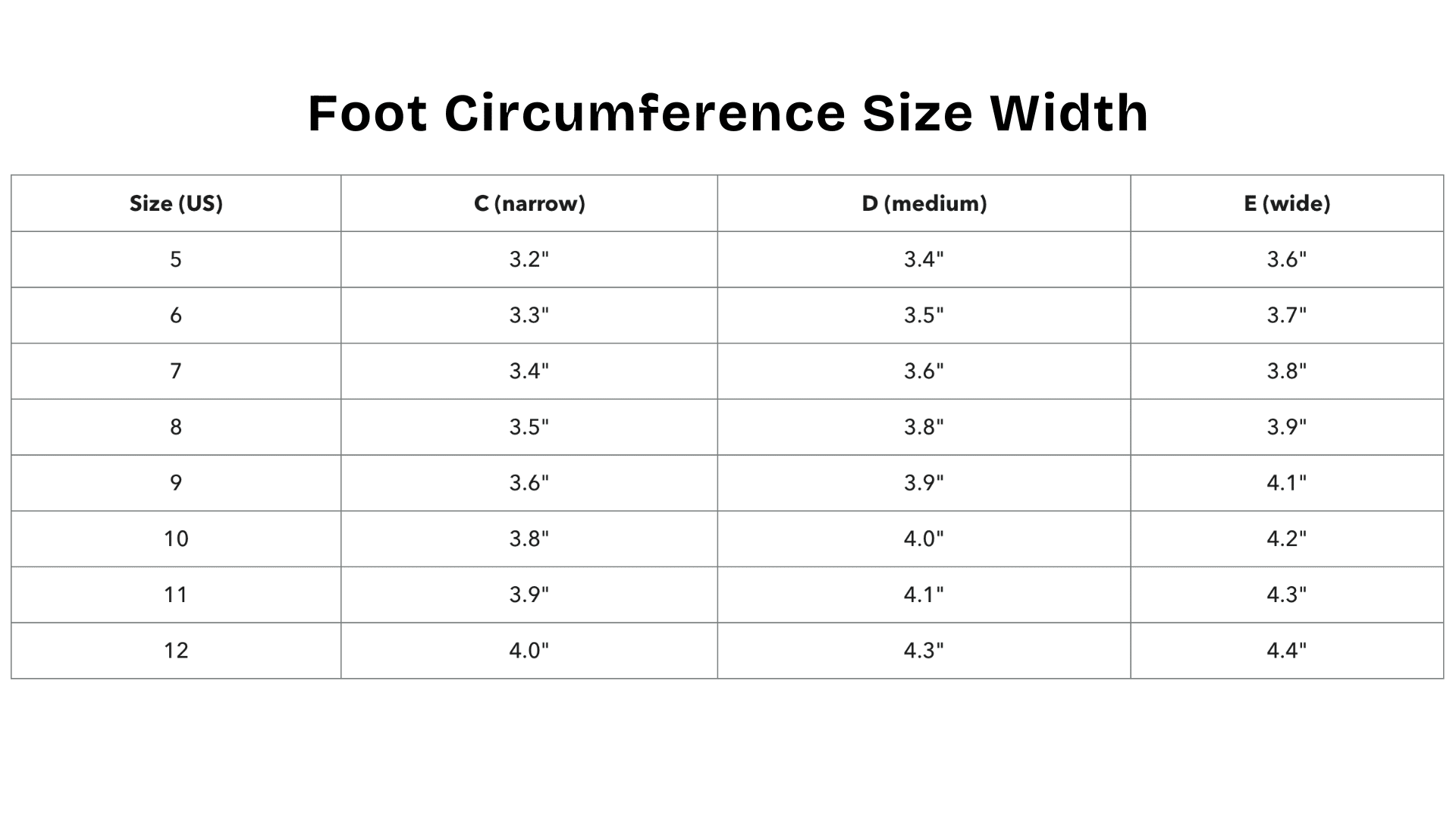
Shoe widths can vary, so size charts include categories such as narrow, medium, wide, and extra wide. For example, a medium width is often the default width, while wide or extra wide shoes are for people with wider feet.
Common Width Categories:
-
- B: Narrow (women’s)
- D: Medium (standard for women, narrow for men)
- 2E: Wide
- 4E: Extra wide (usually for men)
By using a foot circumference size chart, you can choose shoes that fit comfortably and avoid the frustration of shoes that are too tight or too loose. It’s a simple way to make sure your shoes feel just right!
Foot Circumference and Shoe Sizing
While most people focus on foot length when choosing shoes, your foot’s width (circumference) plays a big role in how well shoes fit and feel. Here’s why foot circumference matters when it comes to shoe sizing:
1. Foot Width Matters: A shoe’s width is just as important as its length. You’ll need shoes with more room across the ball and arch if your foot is wider. If they’re too tight, they can cause blisters and discomfort.
2. Shoe Width Options: Many shoe brands offer different widths, such as narrow, medium, wide, and extra wide. Your foot circumference helps determine which width is right for you.
3. Comfort and Fit: When shoes are too tight around the circumference, it can feel like your foot is being squeezed. On the other hand, shoes that are too loose can lead to instability and blisters.
4. Sizing Variations: Shoe sizes vary by brand, so always check the brand’s specific size chart. Some brands might have their own sizing system based on foot circumference, so measuring both foot length and circumference is a good idea.
5. Consider Shoe Types: Certain shoes, like boots, dress shoes, and sneakers, may fit differently, even if the size is the same. For example, boots may have more room in the toe area but less room in the arch.
By taking foot circumference into account, you can avoid the pain of tight shoes or the instability of loose ones. This simple step can make a huge difference in how comfortable your shoes feel!
Variations Across Sizing Systems
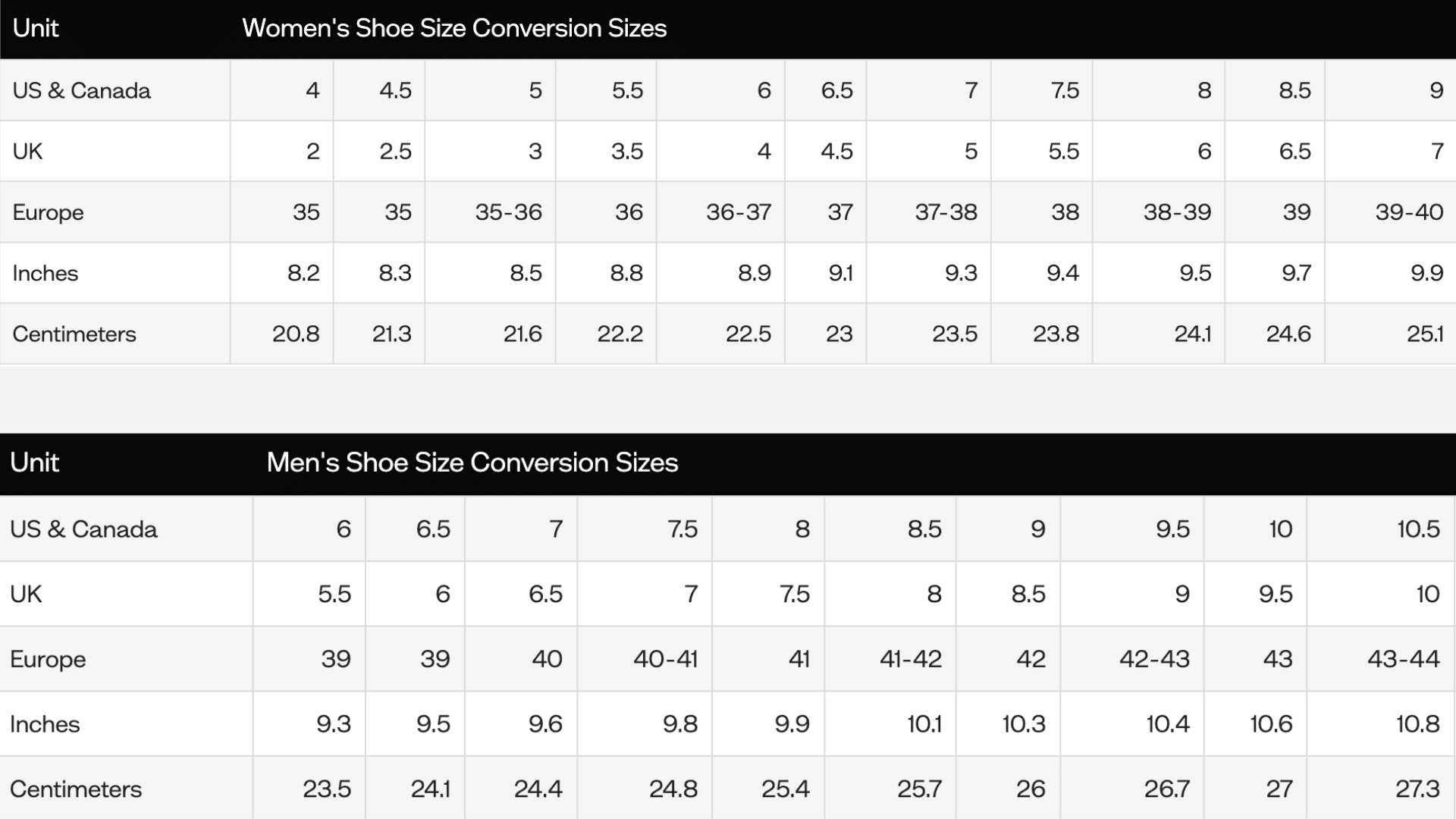
When it comes to shoe sizing, things can get a bit confusing because different countries and brands use different sizing systems. The way sizes are labeled can vary depending on where you are and which brand you choose. Let’s take a look at how shoe sizes change across different systems:
1. US Sizes
In the United States, shoe sizes for men, women, and children are labeled separately. For example, a woman’s size 8 in the US might be a size 6 in men’s shoes. Women’s shoes are about 1.5 to 2 sizes smaller than men’s in the US sizing system. Children’s shoe sizes are often listed as whole numbers, like 1, 2, 3, etc.
2. UK Sizes
In the UK, shoe sizes are usually smaller than US sizes. A UK men’s size 8 is about the same as a US men’s size 9. For women, UK sizes are typically about 2 sizes smaller than US women’s sizes. UK children’s shoe sizes are also slightly different from US sizes, so always check the chart when shopping internationally.
3. EU Sizes
The European Union uses a completely different system based on the length of your foot in centimeters. EU shoe sizes are labeled with 38, 39, 40, etc. A size 38 in the EU is roughly the same as a size 7 in the US for women, but it’s always important to check a conversion chart. Children’s sizes in the EU are numbered similarly to adult sizes, but they start at smaller numbers, like 16 or 17.
In conclusion, shoe sizing can vary depending on the system and region. While foot circumference is key to ensuring your shoes fit well, always pay attention to the specific sizing chart for the brand and country you’re buying from.
How to Convert Sizes
When shopping for shoes, you might come across different sizing systems. Shoe sizes can vary between countries, so understanding how to convert them is important. Here’s a simple guide on how to convert shoe sizes across different systems:
1. US to UK Sizes: US shoe sizes are generally 1 size larger than UK sizes for men and 2 sizes larger for women.
- For Men: If you wear a size 10 (US), your UK size would be 9.
- For Women: If you wear a size 8 (US), your UK size would be 6.
2. US to EU Sizes: US shoe sizes are different from EU sizes, which are based on foot length in centimeters. EU sizes usually run higher than US sizes.
- For Men: A US size 10 would be around EU size 44.
- For Women: A US size 8 would be around EU size 39.
3. UK to EU Sizes: UK and EU sizes are similar but not the same. A UK size 9 men’s shoe is usually around EU size 43.
- For Men: UK size 9 = EU size 43.
- For Women: UK size 6 = EU size 39.
Tips for Selecting the Right Shoe
Choosing the right pair of shoes is important for comfort, support, and your overall foot health. Here are some simple tips to help you pick shoes that fit well and feel good:
1. Measure Your Feet: Your feet can change over time, so it’s a good idea to measure them every year or whenever you’re buying new shoes. Measure both foot length and foot circumference.
2. Check the Fit at the End of the Day: Your feet tend to swell a little throughout the day, so it’s best to shop for shoes in the afternoon or evening when they are at their largest.
3. Consider Foot Width: If your feet are wider, look for shoes that offer different width options, like narrow, medium, wide, or extra wide. Some shoes have adjustable straps or laces to help with width.
4. Look for Enough Toe Room: When trying on shoes, ensure enough space at the front for your toes. You should be able to wiggle your toes comfortably. Shoes that are too tight in the toe area can lead to blisters.
5. Check for Proper Arch Support: Make sure the shoes you pick have enough arch support to keep your feet comfortable. If you have flat feet or high arches, you may want shoes designed for those needs.
By following these tips, you’ll be able to find shoes that fit well and keep your feet comfortable throughout the day. Happy shoe shopping!
Conclusion
Selecting the right shoes is all about finding the perfect fit for your feet. Foot circumference plays a key role in making sure your shoes are comfortable and supportive.
Remember to measure both foot length and circumference, check the width, and look for enough room for your toes. It’s also important to think about the activity you’ll be doing, whether you need extra arch support, and how the shoes feel after some wear.
By following these simple steps, you can avoid the discomfort of ill-fitting shoes and find a pair that supports your feet all day long. Proper shoes can make a huge difference, so take your time and choose wisely!
Frequently Asked Questions
How does foot circumference affect shoe sizing?
Foot circumference directly impacts shoe width. A larger circumference means you’ll likely need a wider shoe. If shoes are too tight around your foot’s circumference, they can cause discomfort.
Are foot circumference size charts the same across brands?
No, foot circumference size charts can vary across brands. While most use similar measurements, shoe sizing may differ slightly depending on the manufacturer.
Do men’s and women’s shoes have different foot circumference sizes?
Yes, men’s and women’s shoes typically have different foot circumference sizes. Women’s shoes are usually narrower than men’s, so there are separate size charts.
How can I convert foot circumference to shoe size?
You can convert foot circumference to shoe size by consulting size charts specific to the shoe brand. These charts match foot circumference measurements to the right shoe width and size.


